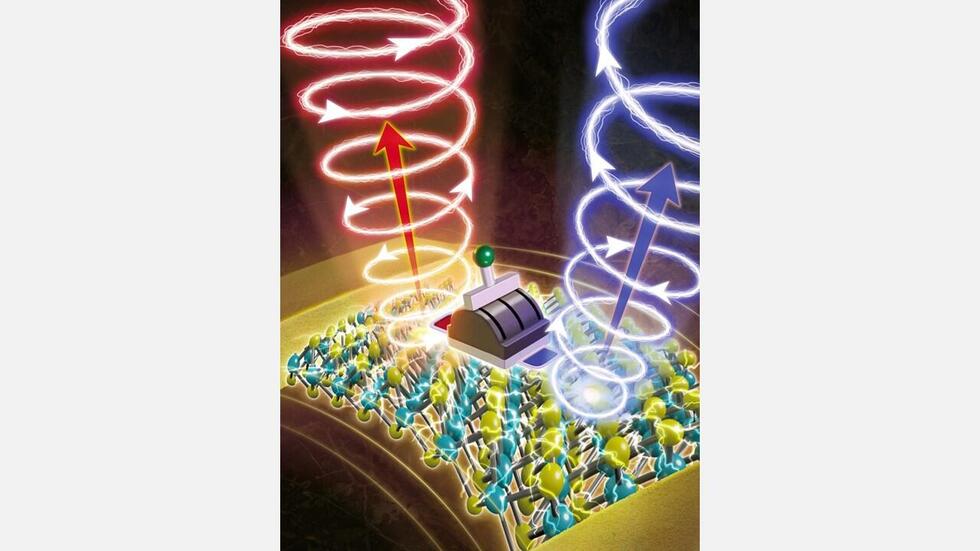
Engineering
September 13, 2021
Light does the twist for quantum computing
Twisting light that switches direction at room temperature could be the future of quantum information processing.
Scientists have generated circularly polarized light and controlled its direction without using clunky magnets or very low temperatures. The findings, by Nagoya University researchers and colleagues in Japan, and published in the journal Advanced Materials, show promise for the development of materials and device methods that can be used in optical quantum information processing.
Light particles called photons have interesting properties that can be exploited for storing and transporting data, and show tremendous promise for use in quantum computing.
For this to happen, information is first stored in electrons that then interact with matter to generate data-carrying photons. Information can be encoded in the direction of an electron's spin, just as it is stored in the form of 0 and 1 in the 'bits' of computers . Data can also be stored when electrons occupy 'valleys' found in the energy bands they move between while they orbit an atom. When these electrons interact with specific light-emitting materials, they generate twisting 'chiral' 'valley-polarized light', which shows potential for storing large amounts of data.
So far, however, scientists have only managed to generate this type of circularly polarized light using magnets and very cold temperatures, making the technique impractical for widespread use.
Nagoya University applied physicists Taishi Takenobu and Jiang Pu led a team of scientists to develop a room-temperature, electrically controlled approach for generating this chiral valley-polarized light.
First, they grew a monolayer of semiconducting tungsten disulfide on a sapphire substrate and covered it with an ion-gel film. Electrodes were placed on either end of the device and a small voltage was applied. This generated an electric field and ultimately produced light. The team found that chiral light was observed between -193°C and room temperature from the portions of the device where the sapphire substrate was naturally strained as a result of the synthetic process. It could only be generated from the strain-free areas, however, at much colder temperatures. The scientists concluded that strain played a crucial role in generating room temperature valley-polarized light.
They then manufactured a bending stage on which they placed a tungsten disulfide device on a plastic substrate. They used the bending stage to apply strain to their material, driving an electric current in the same direction of the strain and generating valley-polarized light at room temperature. Applying an electric field to the material switched the chiral light from moving in one direction to moving in the other.
"Our use of strained monolayer semiconductors is the first demonstration of a light-emitting device that can electrically generate and switch right- and left-handed circularly polarized light at room temperature," says Takenobu.
The team will next further optimize their device with the aim of developing practical chiral light sources.
The team developed a room-temperature, electrically tunable
chiral light-emitting diode based on strained monolayer semiconductors
(Credit: Nagoya Univ. Takenobu Lab.)
This study, "Room-Temperature Chiral Light-Emitting Diode Based on Strained Monolayer Semiconductors," was published in the journal Advanced Materials on July 24, 2021 at DOI: 10.1002/adma.202100601.
Authors:
Jiang Pu, Wenjin Zhang, Hirofumi Matsuoka, Yu Kobayashi, Yuhei Takaguchi, Yasumitsu Miyata, Kazunari Matsuda, Yuhei Miyauchi, and Taishi Takenobu
Contact:
Jiang Pu
Assistant Professor, Graduate School of Engineering, Nagoya University
Email: jiang.pu@nagoya-u.jp
Taishi Takenobu
Professor, Graduate School of Engineering, Nagoya University
Email: takenobu@nagoya-u.jp